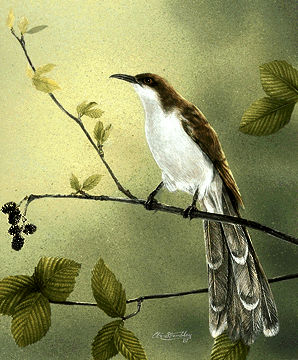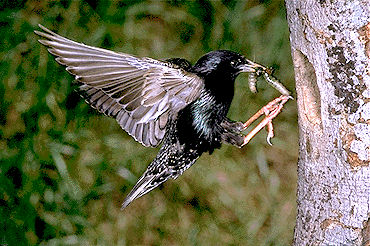Feathers are only found on birds. They probably evolved as a temperature-control device from scales, much like those of modern reptiles. Feathers are complex structures, typically composed of a shaft, vanes, barbs, barbules and, sometimes, an aftershaft (eg, in a spruce grouse). They are light but can be extremely rigid, depending on their function and location on the body.
Flight feathers (remiges) include primaries (large, outer wing feathers) and secondaries (inner wing feathers). These, together with tail feathers (rectrices), allow control of lift, steering and braking. Contour feathers, including all body feathers, give a bird its shape. Down - particularly abundant in waterfowl - and semiplumes are small feathers hidden under contour feathers to increase insulation.
Some very specialized feathers, for example the rictal bristles around the bill of species that feed in flight (eg, in nighthawks), or powder down feathers of herons, may not resemble feathers at all; they can be very beautiful, such as the tail feathers of peacocks or the wing feathers of African nightjars. Feathers grow on specific areas of the body (feather tracts) which vary in form and location and have been used as an aid to bird classification.
Birds molt at least once annually. Body feathers molt gradually, but in some groups (eg, in geese) all flight feathers are shed simultaneously, rendering the bird flightless until new ones grow. Feathers may change colour seasonally (eg, in scarlet tanagers) or shape between molts because of wear and abrasion (eg, in snow buntings, starlings). The original colour may fade through exposure to light and weather. In many species, the plumage of young birds differs markedly from that of adults (eg, in brownheaded cowbirds) and that of females from males; therefore, feather colour and shape can be used to determine age or sex (eg, in waterfowl).
The number of feathers can vary seasonally. For instance, birds living in cold climates, such as the Canadian Arctic or Subarctic, may have more feathers in winter than in summer (eg, in grey jays). Of Canadian species the ruby-throated hummingbird has the fewest feathers, with 940; the tundra swan has the most, 25 216; many small passerines have 1119- 4607. Large birds have more feathers than small birds; however, in relation to body weight, plumage is lighter in heavier birds.

 Share on Facebook
Share on Facebook Share on X
Share on X Share by Email
Share by Email Share on Google Classroom
Share on Google Classroom












